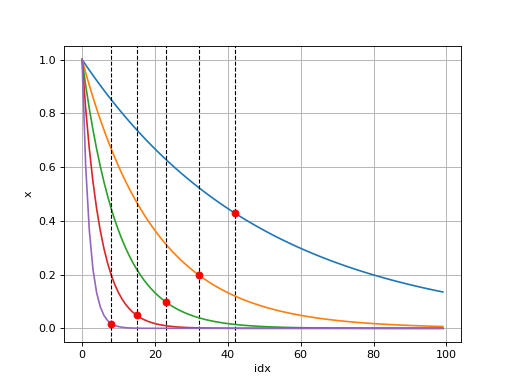spkit.elbow_knee_point¶
- spkit.elbow_knee_point(x, dx=None, plot=False, show=False, show_lines=False, lw=1)¶
Finding Elbow-knee point of a curve
The algorithm computes the perpendicular distance between each curve point to base vector. where base vector is line between first and last point of curve.
\[ \begin{align}\begin{aligned}dist = |p - (p \cdot b') b'|\\b' = b/|b|\\idx = argmax(dist)\end{aligned}\end{align} \]- Parameters:
- x: 1d array
input curve,
- dx: None, or 1d-array, default=None
if None, curve points are assumed to be evenly spaced.
if not None, then dx is the points for x is computed on.
- plot: bool, False
if True, plot the curve, and knee point
- show_dist: bool, default=False,
if True, show distance computed to use for knee point
- show: bool, default=False
if True, plt.show() is excecuted, else not, to be used for addtional plt commands to be affective
- Returns:
- idx: int,
index of the knee point in the curve
Notes
Knee point is not very accurate if curve x is noisy. Apply this algorithm with smooth curve x
References
wikipedia - https://en.wikipedia.org/wiki/Knee_of_a_curve
Examples
import numpy as np import matplotlib.pyplot as plt import spkit as sp t = np.arange(100)/99 x = np.exp(-2*t) idx = sp.elbow_knee_point(x,plot=True,show_lines=False) x = np.exp(-5*t) idx = sp.elbow_knee_point(x,plot=True,show_lines=False) x = np.exp(-10*t) idx = sp.elbow_knee_point(x,plot=True,show_lines=False) x = np.exp(-20*t) idx = sp.elbow_knee_point(x,plot=True,show_lines=False) x = np.exp(-50*t) idx = sp.elbow_knee_point(x,plot=True,show_lines=False) plt.grid() plt.show()






